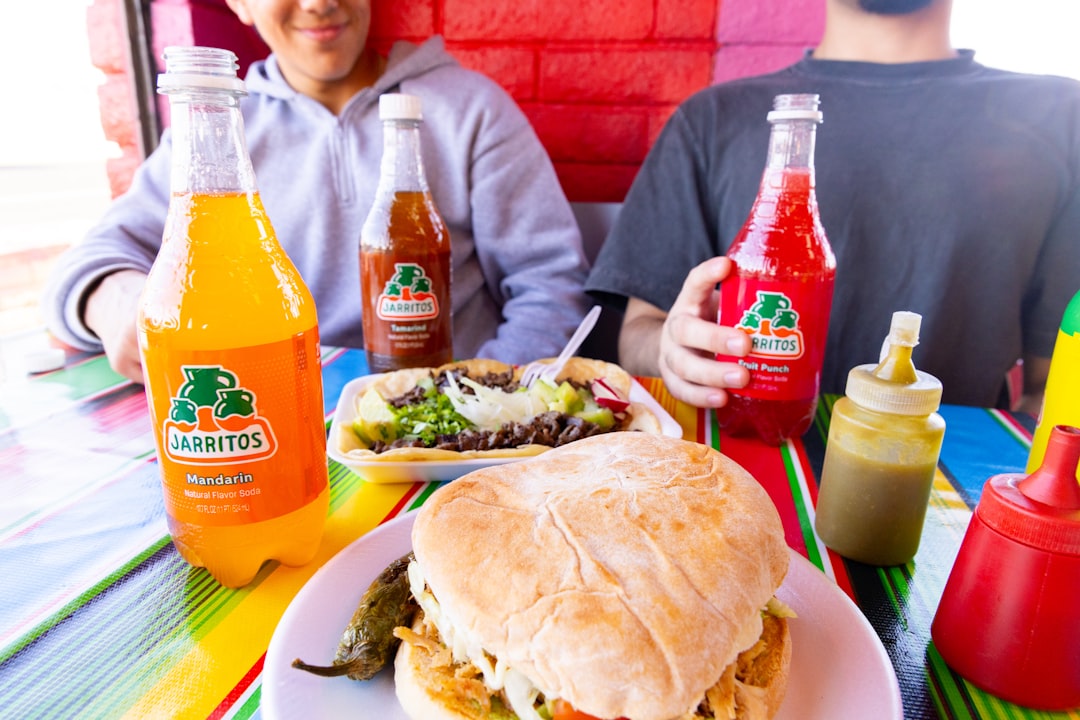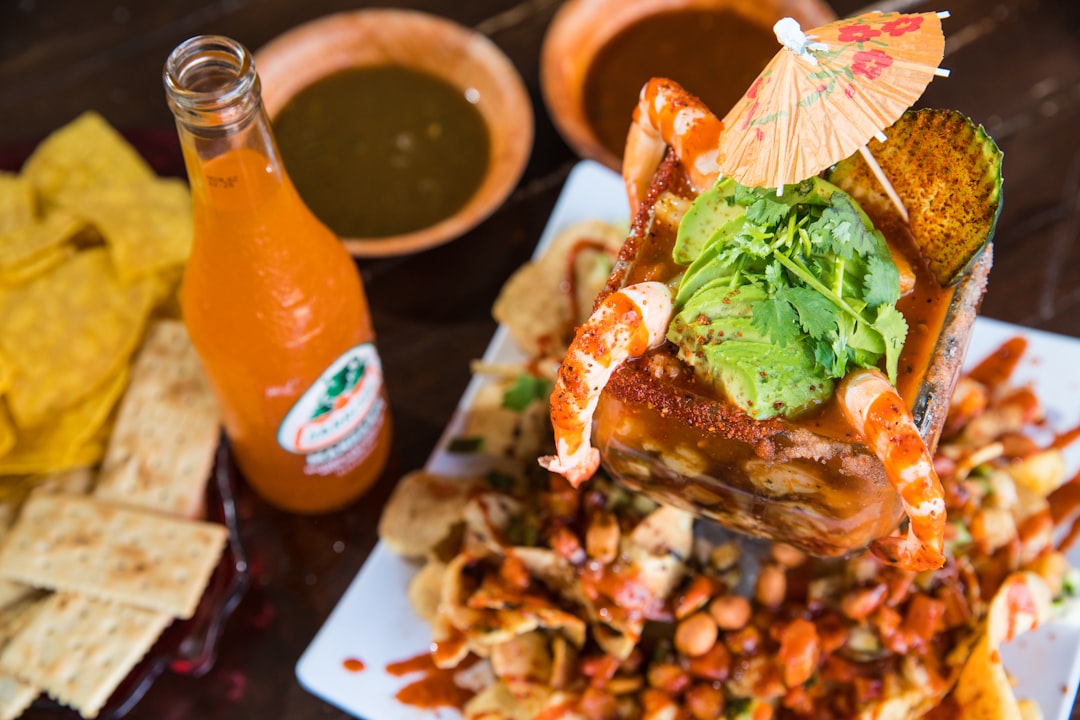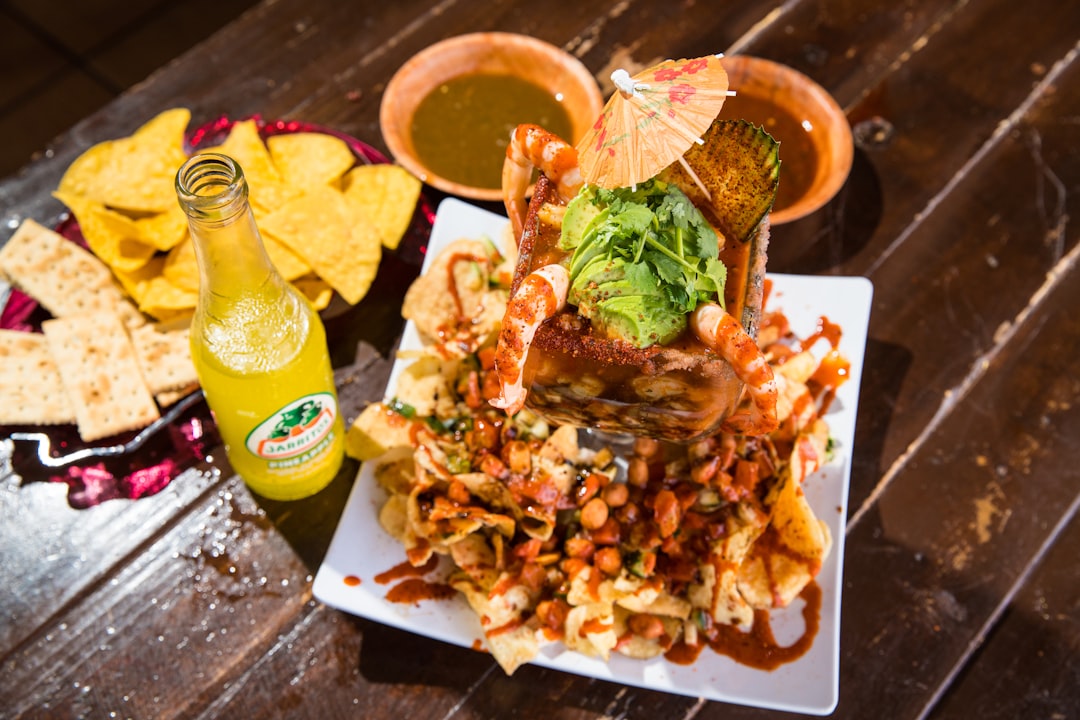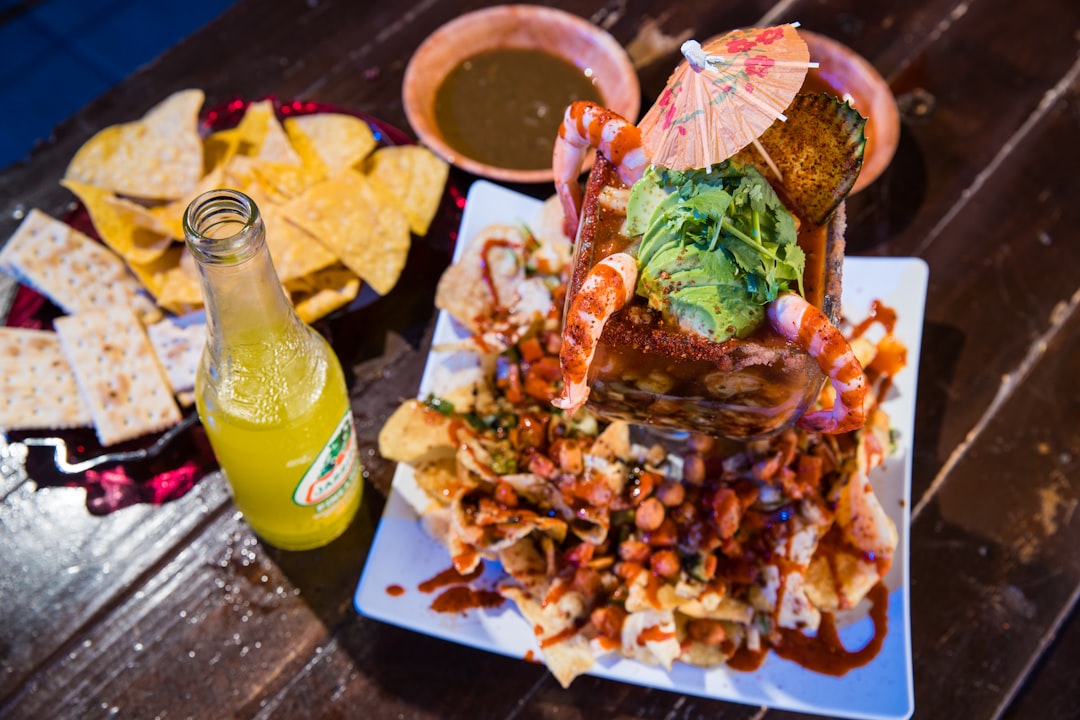

Engage prospects with a scan and streamline customer engagement with FREE QR code marketing tools by Sona – no strings attached!
Create a Free QR CodeFree consultation

No commitment

Engage prospects with a scan and streamline customer engagement with FREE QR code marketing tools by Sona – no strings attached!
Create a Free QR CodeFree consultation

No commitment
Across the vibrant landscape of Mexican restaurants, speed and seamless service are critical to the dining experience. Guests expect to savor authentic Mexican cuisine without unnecessary waiting, whether ordering tacos, exploring vegan Mexican food options, or settling up for a meal with friends. Traditional workflows such as paper menus, manual order-taking, and cash-only payments often create friction, slow down table turns, and detract from the very atmosphere that makes Mexican food culture so inviting. Missed orders and delays not only create frustration for guests but also cause lost revenue opportunities, as high-value diners can sometimes slip by without ever being tracked or engaged beyond a single visit.
Modern diners have come to appreciate the convenience of technologies that connect physical spaces with digital journeys. QR codes are central to this transformation, providing instant access to interactive menus, online ordering, and even QR code payments, all from a single scan. They eliminate the need for printed menus, speed up ordering, and let restaurants update specials or highlight Mexican food festivals in real time. Without digital touchpoints, restaurants often lack visibility into who dines with them, making it easy for promising regulars or event attendees to remain anonymous and unengaged.
By embracing QR codes, Mexican restaurant owners can offer faster, friendlier service while gathering valuable guest insights that drive ongoing improvements. This practical guide outlines how QR codes can streamline operations, mitigate the risk of missed upsell or repeat visit opportunities, and deliver measurable business outcomes for Mexican restaurants.

QR codes bridge the gap between a restaurant’s warm, in-person ambiance and the efficiency of digital ordering. Legacy processes such as waiting for staff to take orders, deciphering specials from chalkboard scribbles, or clarifying menu modifications at the table can slow service and introduce errors. When guests cannot quickly browse options or customize their order, they often default to familiar items or leave altogether during rushes, which reduces check sizes and satisfaction.
By connecting every table to a scannable experience, you can reduce dependency on printed menus and verbal explanations. Digital menus provide rich content like dietary filters, allergen information, add-ons, and photos that guide choices quickly. Staff are freed from repetitive tasks and can focus on hospitality details that elevate the experience: refilling aguas frescas, upselling house-made salsas, and checking in on dietary needs.
Key steps include:
Example: A busy restaurant replaces paper menus with QR menus during a Mexican food festival weekend. The team updates the digital menu hourly to reflect sold-out specials and new batches of elote. Table turnover improves by 18 percent, promos for aguas frescas are redeemed at higher rates, and guest reviews praise speed and accuracy. The restaurant attributes a 9 percent lift in average check size to convenient upsell prompts like add guacamole and upgrade to birria.

Mexican restaurants face the dual challenge of preserving culture-rich experiences while adapting to fast-changing diner expectations. From mariachi nights to family-style fiestas, the atmosphere is a core part of the draw. Yet, long lines, crowded host stands, and outdated menus can dull the magic. QR codes help meet modern expectations without eroding hospitality traditions by creating quick, intuitive paths from interest to action.
Guests today expect immediacy and clarity. They want to know which items are vegetarian, which salsas are spicy, and whether the kitchen can handle a gluten-free request. When these answers are visible with a single scan, decision fatigue drops and confidence rises. For operators, QR journeys capture valuable signals that would otherwise be lost in analog workflows, giving insight into who is dining, what they care about, and how to serve them better next time.
QR codes address these core pain points:
For instance, a midtown taquería added QR codes to festival flyers that linked to an online RSVP, an event menu, and a discount for weekday lunch. The scans built a segment of event-focused diners, which the team later invited to a tequila tasting. The sequence turned anonymous foot traffic into an identifiable, re-engageable audience.

QR technology is flexible, and different formats serve distinct purposes. Selecting the right type for each touchpoint ensures your guests get the right experience and you capture the right data.
Mexican restaurants often rely on a small set of high-impact formats:
Dynamic QR codes are essential for hospitality. Menus change with seasonality and supply. Specials rotate nightly. With dynamic codes, you can keep printed assets like table tents in circulation while updating the content behind them, protecting design investments and reducing waste.

Growth often hides in plain sight where offline traffic meets your brand. QR codes help transform these moments into measurable engagement, especially when placed where diners already look for information or entertainment. The goal is not to overwhelm guests with technology, but to offer immediate value: faster ordering, exclusive offers, or insider content.
Start with a few high-visibility, high-intent placements, measure results, and expand from there. Focus on the media your guests already interact with: table tents, check presenters, delivery packaging, and event materials. Then, fine-tune with data by adjusting calls to action, positioning, and copy.
Example: A high-volume cantina added unique QR codes to dine-in checks and delivery bags. Within two months, delivery-driven loyalty signups rose by 22 percent and dine-in feedback response rates doubled. The team discovered that late-night diners valued spicy salsas and smaller sharable plates, leading to a new after-hours botanas menu that lifted late-night revenue by 11 percent.

QR codes shine when they reduce friction and enrich the guest journey. They also illuminate behavior that was previously untrackable, turning incremental moments into long-term loyalty.
Consider three practical use cases:
Adopting these approaches transforms passing interactions into deeper relationships. As patterns emerge, you can customize pre-meal suggestions, expand popular categories, and refine service for VIPs and regulars. The outcome is a virtuous cycle that improves both guest satisfaction and average revenue per visit.
Each scan signals intent. A guest who scans a QR code on a delivery bag may love at-home dining. A scan on a mezcal tasting flyer might indicate interest in premium experiences. With a few thoughtful QR placements, restaurants can segment audiences automatically and tailor follow-ups with message-market fit. For campaign ideas, see Sona’s Playbook titled Intent-Driven Retargeting: Driving High-Impact Campaigns with First-Party Intent Signals.
Most restaurants already have natural moments for segmentation across the guest journey. The key is to map those moments to unique QR codes, capture the context of each scan, and sync the resulting data to your CRM and ad tools. This lets you deliver relevant offers at the right time, rather than generic blasts that underperform.
This segmentation addresses a common issue in hospitality: incomplete data on who your guests are and what motivates them. By using QR journeys to quietly collect consented signals, you can greet guests with offers that feel personal and timely.
QR codes thread together the many touchpoints that make up your brand presence. When diners see consistent messages on menus, social posts, event flyers, and takeout bags, they are more likely to act, including through QR-driven OOH advertising. When you track those actions centrally, you can invest confidently in what works and cut what does not.
A strong multi-channel strategy starts with choosing five or six core surfaces where a QR code can deliver an immediate payoff, then measuring performance over time. Use a centralized platform, such as Sona QR, to manage all codes, monitor performance, and sync data with your CRM and ad platforms for end-to-end attribution.
Tactics include:
With QR codes as the connective tissue, your offline hospitality feeds a digital engine that improves with every scan. The result is a guest journey that feels smooth and coordinated rather than disjointed.
Launching a QR initiative is not just about printing a code. It is about aligning an outcome to a scan, choosing the right format, designing for attention, deploying where it matters, and measuring results. Treat your first rollouts as experiments. Learn quickly, then scale what works.
Start small with one or two high-impact use cases like scan-to-menu and scan-to-pay. These reduce friction immediately and generate the data you need to design more advanced campaigns such as event RSVPs, loyalty enrollment, or segmented offers.
Clarify the business goal and the action you want guests to take after scanning. Examples include accelerating menu browsing at busy lunch hours, enrolling guests into a rewards program, or capturing RSVPs for a cultural festival. Define what success looks like: faster table turns, higher check sizes, or more loyalty signups.
Select a code type that matches your objective. For editable links and deep analytics, dynamic QR codes are best. You can change the destination without reprinting and track scans by time, location, and device. Use static QR codes only for fixed destinations that will not change.
A QR code is a call to action that must be seen, understood, and trusted. Design with brand elements, add a benefit-driven CTA, and validate real-world scannability before rolling out.
Place codes where guests naturally look and where a scan can solve a problem or provide a perk. Start with table tents, check presenters, entrance signage, and delivery packaging. Ensure consistency of message and visual style across surfaces so guests recognize the experience instantly.
Measurement turns QR from a convenience into a growth engine. Use dashboards to monitor scans and conversions in real time, then iterate. Compare performance by placement, message, and creative to refine your approach.
Many Mexican restaurants struggle to quantify the payoff of operational changes. QR codes make it possible to attribute real outcomes to specific placements and messages. When you connect scan data to orders, payment, and loyalty, you can calculate return on investment and direct budget to high-impact areas with confidence. For methodology, see Sona’s blog post titled The Essential Guide to Offline Attribution: Maximizing ROI Through Offline Channels.
Advanced platforms streamline this process. Sona QR captures scans by time, device, and location, while Sona.com connects those scans to known guests and revenue through identity resolution and multi-touch attribution. The combination turns in-store engagement into a measurable marketing channel.
For example, after launching QR menus and scan-to-pay, a neighborhood cantina measured a 20 percent reduction in order wait times and a 12 percent lift in contactless payments. Over six weeks, UTM-tagged QR links revealed that patio table scans produced the highest conversion to dessert add-ons, prompting a targeted churro and café de olla campaign that lifted dessert attach rate by 15 percent.
Scaling QR initiatives requires more than copying a code onto new surfaces. Focus on clarity, trackability, and automation. Prioritize deployments that match guest behavior and deliver immediate value.
A few best practices consistently drive results across Mexican restaurants of all sizes:
Start creating QR codes for free. Create dynamic codes in minutes, and connect scan data to your CRM for automated follow-ups that convert curiosity into loyalty.
Embracing QR codes empowers Mexican restaurants to honor tradition while driving innovation. The goal is not to replace hospitality, but to amplify it by removing friction and adding context. With every scan, you learn more about what guests want, when they want it, and how to serve it best, whether that is a plant-based twist on classic pozole or a limited-run mezcal from Oaxaca.
The digital transformation of Mexican restaurants is well underway. By bridging the gap between offline hospitality and online intelligence, you can offer memorable, accelerated service while gaining visibility that reduces missed opportunities. From faster ordering and contactless payment to festival RSVPs and loyalty enrollment, QR codes convert spontaneous interest into lasting relationships. With Sona QR and Sona.com, operators have the tools to manage codes at scale, track engagement across channels, and tie scans to revenue. The result is a data-driven approach to hospitality that preserves the soul of the experience while elevating its efficiency and impact.
QR codes have revolutionized Mexican restaurants by streamlining the ordering process and enhancing customer satisfaction. They enable faster service, reduce wait times, and create a seamless dining experience that keeps guests coming back. Beyond speeding up orders, QR codes open doors to customer acquisition, personalized promotions, and valuable insights into guest preferences — all tailored to the vibrant Mexican dining scene.
Imagine your customers effortlessly browsing your menu, placing orders, and discovering specials with a simple scan—while you track engagement and optimize your offerings in real time. With Sona QR, you can create dynamic, trackable QR codes that update instantly without costly reprints, connecting every scan directly to revenue and helping you serve more happy diners efficiently.
Start for free with Sona QR today and transform your Mexican restaurant’s ordering experience into a powerful growth engine.
The article does not specify particular Mexican restaurants but focuses on how Mexican restaurants can enhance service using QR codes.
Guests can scan a QR code placed on table tents or menus to access a digital menu with photos, modifiers, and dietary tags, allowing them to browse and customize their order quickly.
Popular dishes mentioned include tacos, vegan enchiladas, gluten-free tortillas, cochinita pibil, chile en nogada, birria, and aguas frescas.
Many modern Mexican restaurants are adopting QR code payment options to streamline the dining experience, though specific restaurant names are not provided.
QR codes speed up ordering, provide dynamic menus with dietary information and photos, reduce errors, enable contactless payments, offer real-time updates on specials, and allow restaurants to gather valuable guest insights for improved service.
Use Sona QR's trackable codes to improve customer acquisition and engagement today.
Create Your FREE Trackable QR Code in SecondsJoin results-focused teams combining Sona Platform automation with advanced Google Ads strategies to scale lead generation

Connect your existing CRM

Free Account Enrichment

No setup fees
No commitment required

Free consultation

Get a custom Google Ads roadmap for your business






Launch campaigns that generate qualified leads in 30 days or less.
